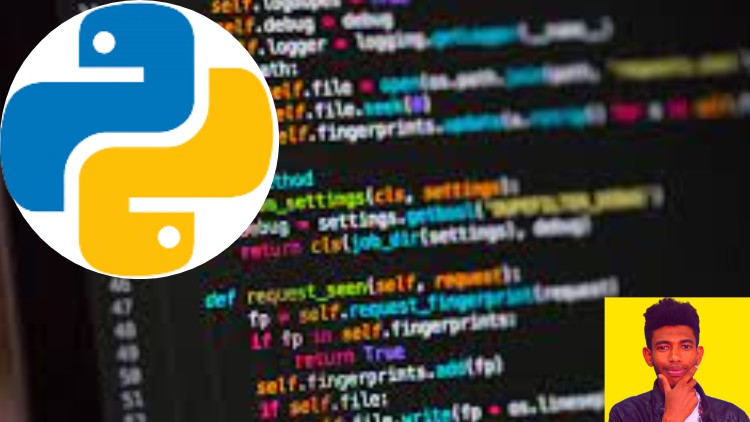
Learn Python programming from scratch with hands-on exercises in this Python course!
What you will learn
Master the Features of Python Language
Using Python to solve real life problems with computer programs
You will learn the absolute basics of how programs run, and why Python is a great language.
You will be discovering the different data types Python has to offer, and how to use them.
You will learn how to use loops to allow for iteration over data, and improve code efficiency.
You will learn how to use control flow, to allow ‘decision making’ to happen in your code.
You will learn how to write functions to allow for reusable blocks of code to be used elsewhere in your code.
Modules and libraries: students will learn how to import and use pre-existing modules and libraries in their own programs.
Description
Learn Python like a Professional Start from the basics and go all the way to creating your own real world applications
Learn Python from scratch, get hired, and have fun along the way with the most modern, up-to-date Python course on Udemy (we use the latest version of Python). This course is focused on efficiency: never spend time on confusing, out of date, incomplete Python tutorials anymore.
This comprehensive and project based course will introduce you to all of the modern skills of a Python developer (Python 3) and along the way, we will do different coding challenge
The curriculum is going to be very hands on as we walk you from start to finish of becoming a professional Python developer. We will start from the very beginning by teaching you Python basics and programming fundamentals, and then going into advanced topics and different career fields in Python so you can get real life practice and be ready for the real world.
The topics covered in this course are:
– Programming Fundamentals
– Python Basics
– Python Fundamentals
– Data Structures
– Functional Programming with Python
– Lambdas
– Modules
– Virtual Environments
– Developer Environments (PyCharm, VS Code)
In this course, you will be taught the fundamentals of Python through video lectures, quizzes, review exercises, and programming challenges.
Whether you are new to programming, or want to level up your Python skills, or are coming from a different programming language, this course is for you. This course is not about making you just code along without understanding the principles.
This course will push you and challenge you to go from an absolute beginner with no coding experience to someone that can go off, forget about me, and build their own applications and get hired.
If you have any questions about this course, please contact me as soon as possible and I will respond to you the same day. With the help of this course, you will learn how to make your lives simpler by becoming familiar with the Python programming language. This will keep you motivated on a daily basis and prevent you from becoming bored while studying Python.
What if I get stuck?
You can drop a question in the Q&A, and the instructor or the teaching assistant will answer your questions.
What if I don’t like the course?
That will likely not happen. But, if it does, you are covered by the Udemy 30-day money-back guarantee, so you can quickly return the course. No questions asked.
What IDE/editor is used in the course?
We will use Visual Studio Code and PyCharm in the course. However, many students prefer to use Atom, or other IDEs and that is perfectly fine.
Does the course expire?
No, Once you buy the course, it is yours. You will get all future updates for free as well.
Content